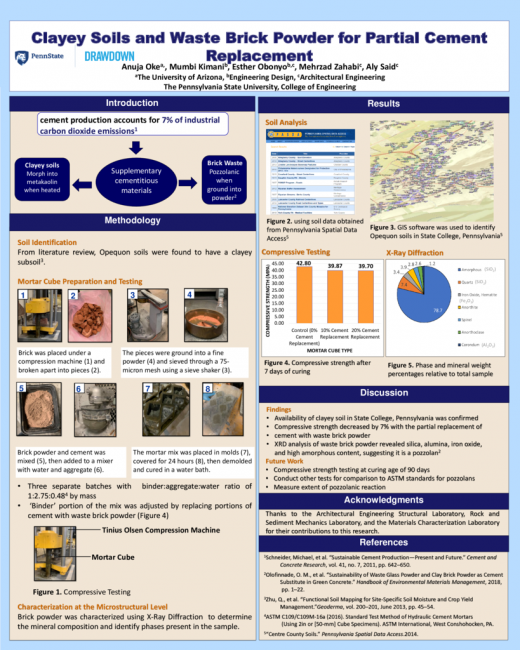This research is an exploration of materials that can be used as partial replacement of cement in mortar or concrete. According to the International Energy Agency, cement production accounts for 7% of industrial carbon dioxide emissions and one of the key areas of reducing these emissions is increasing the use of blended cements. Efforts directed at blended cements have focused mostly on materials such as fly ash, and challenges that have been identified with blended cement include low regional availability of materials as well as inferior mechanical strength in comparison to non-blended cement. This exploratory research is directed at generating additional empirical data that can be used to advance the use of locally available clayey soils and powder from waste bricks in blended cement. To generate empirical data, mortar cubes using waste brick powder were prepared and tested for compressive strength, and X-Ray Diffraction was used to characterize the properties of the waste brick powder at the microstructural level. From regional soil data analysis, preliminary findings indicate that there is widespread availability of clayey soils in State College, Pennsylvania. While the mortar cubes with the highest amount of waste brick powder had 7% lower compressive strength than mortar cubes containing only cement, microstructural analysis suggests that the brick powder has pozzolanic characteristics. Further experimental work is needed, specifically with compressive testing at higher curing ages to provide a more accurate representation of mechanical properties.
Day
Monday Poster Session
Related Conference Themes
Built Environment
Materials & Waste


